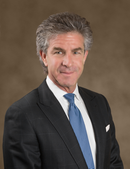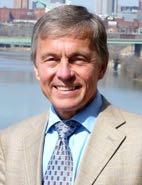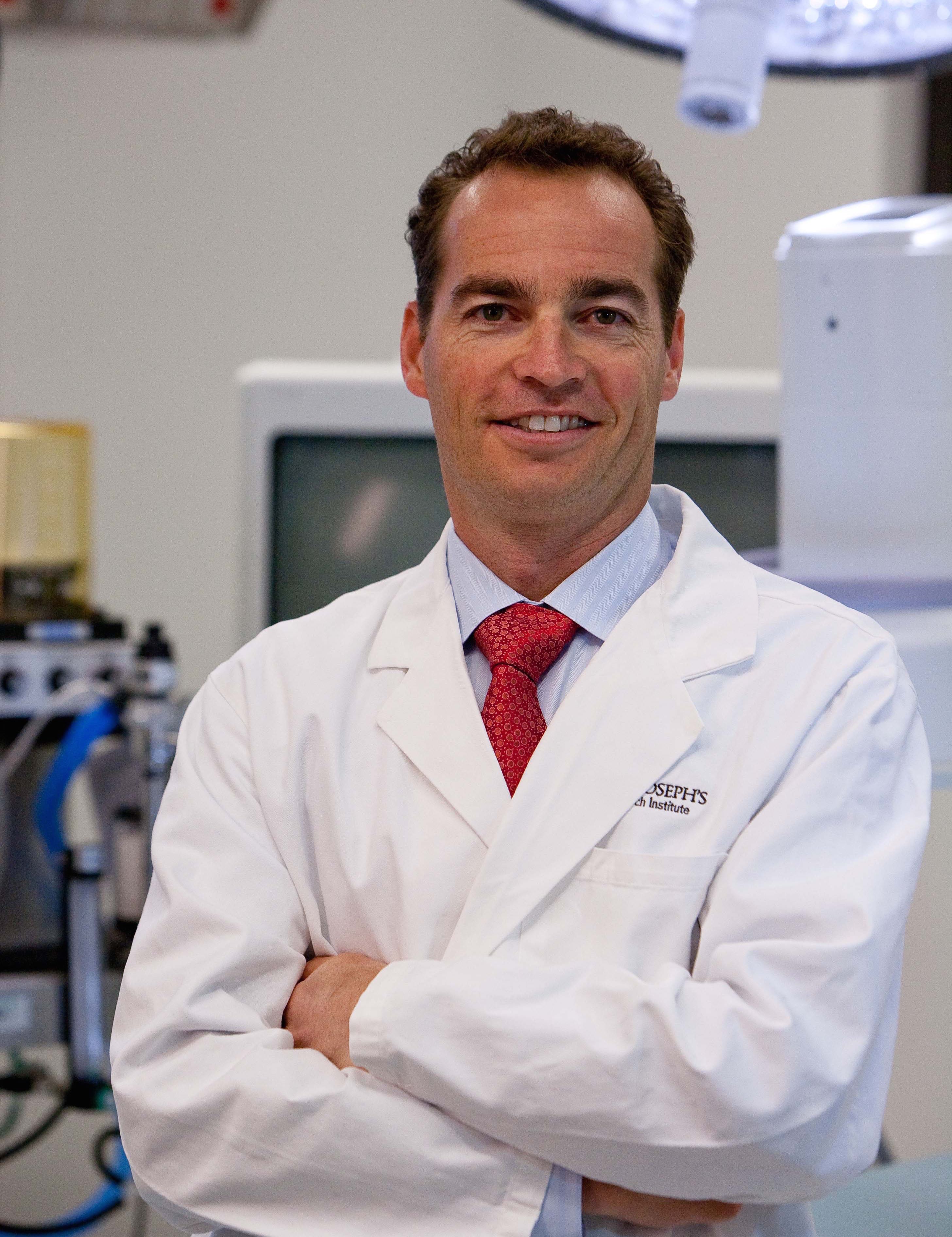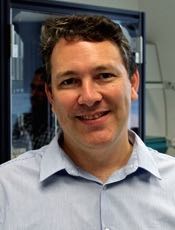08:00 | Morning Coffee and Breakfast Pastries |
|
Session Title: Tissue Engineering -- Research to Clinic |
| |
|
Session Chair: Mark Berman, M.D. Founder, Cell Surgical Network |
| |
08:30 | Novel, Cellular Biomarkers Indicating Tissue-specific, Regenerative Potential
Eric Darling, Associate Professor of Medical Science, Engineering, and Orthopaedics, Brown University, United States of America
Mesenchymal stem/stromal cells (MSCs) have garnered intense interest for
their application in tissue engineering and regenerative medicine
therapies. Unfortunately, the heterogeneity inherent in these cell
populations complicates their use. Traditional, surface marker-based
approaches have had limited success purifying autologous MSCs at
sufficient cell yields such that ex vivo expansion is not required.
Recently, our group has shown that both single-cell mechanical
properties and live-cell gene expression signals can be used to predict
the differentiation potential of MSCs. These approaches target all cells
in stem/stromal populations that are capable of producing
lineage-specific metabolites, encompassing a broader swathe of cell
types and differentiation states than traditional techniques. In
mechanical property-based experiments, we have shown that less compliant
MSCs are more likely to deposit large amounts of calcified matrix
compared to more compliant MSCs following osteogenic induction.
Conversely, more compliant MSCs showed a propensity to produce large
amounts of intracellular lipids following adipogenic induction. In gene
expression-based experiments, we have shown that MSCs can be sorted
using a fluorescent marker that binds to early osteogenic mRNA
molecules, resulting in cell populations that deposited larger amounts
of calcified matrix deposition over unsorted controls. Cell yields were
also significantly higher than standard, cell enrichment approaches.
While osteogenesis has been the primary target of investigation,
continuing work is applying these techniques to other cell types and
tissues. |
09:00 | The Use Of PRP and Stem Cell injections in an Office Setting
Joseph Purita, Medical Director of Stem Cell Centers of America, Institute Of Regenerative and Molecular Orthopedics, United States of America
This presentation concerns PRP and Stem Cell (both bone marrow and
adipose) injections for musculoskeletal conditions in an office
setting. Indications are given as to which type of cell and technique
to use to accomplish repair. Stem cells, both bone marrow derived
(BMAC) and adipose, are used for the more difficult problems.. PRP
injections are utilized for the less severe tendon problems. Discussed
are the indications of when to use Stem Cells verses PRP and when to use
both. The newest concepts in stem cell science are presented. These
concepts include the clinical use of MUSE cells, exosomes, and
Blastomere like stem cells. Basic science of both PRP and stem cells
are discussed. This presentation defines what constitutes an effective
PRP preparation. Myths concerning stem cells are dispelled. One myth
is that mesenchymal stem cells are the most important stem cell. This
was the initial interpretation of Dr. Arnold Caplan the father of
mesenchymal stem cell science. Dr. Caplan now feels that MSCs have an
immunomodulation capacity which may have a more profound and immediate
effect on joint chemistry and biology. We learn that the hematopoietic
stem cells are the drivers of tissue regeneration. Also discussed are
adjuncts used which enhance the results. Therapies include supplements,
LED therapy, laser, electrical stimulation, and cytokine therapy. The
scientific rationale is presented for each of these entities as to how
they have a direct on stem cells. |
09:30 | Sports Medicine and Stem Cells: A Clinical Transformation
Dennis Lox, Physician, Florida Spine and Sports Medicine Center, United States of America
Athletic endeavor has always intertwined with pursuing optimal physical
performance. This, coupled with the inherent risk of traumatic injury
has placed sports medicine at the forefront of progressive treatment.
The emergence of Regenerative Medicine has led to the clinical
translation of sports medicine related problems. The use of Platelet
Rich Plasma (PRP) and Stem Therapy are cornerstones of this model. The
scientific literature will be explored to provide a foundation for the
pathophysiology of injury and trauma as it relates to sports medicine,
and the regulation of catabolic responses through cellular signaling and
cytokines. The rationale for the use of Stem Cell Therapy and PRP in
sports medicine is presented. Various clinical cases are presented to
illustrate the utilization of stem cell therapy and PRP as a therapeutic
strategy to assist athletes in their return to sport. Select situations
in which standard medical treatment is a surgical intervention, may be
unsuitable for return to sport. A Regenerative Medicine treatment model
incorporating Stem Cell Therapy, may provide suitable alternative
strategies that facilitate healing and repair, without precluding return
to sport. In the sports medicine world success is measured by return to
sport. The clinical translation of Stem Cell Therapy into sports
medicine, may foster a transformation of treatment strategy. |
10:15 | Coffee Break, Networking, Exhibit and Poster Viewing |
10:45 |  | Keynote Presentation Point-of-Care Surgical Tissue Reconstruction: A Roadmap for the Industry and the Regulatory Authorities
Mark Berman, Past President, American Academy of Cosmetic Surgery; Medical Director, California Stem Cell Treatment Center, United States of America
Background on the evolution of the Cell Surgical Network; how and why it’s appropriate to treat patients now under our empirical investigative umbrella. |
|
11:30 | Human Microphysiological Systems of Blood Vessels and Skeletal Muscle for Drug Toxicity
George Truskey, R. Eugene and Susie E. Goodson Professor of Biomedical Engineering, Duke University, United States of America
Skeletal muscle is important for drug and toxicity testing given the
relative size of the muscle mass and cardiac output that passes through
muscle beds, the key role of muscle in energy substrate metabolism and
diabetes, its role in mediating the severity of peripheral arterial
disease and heart failure, and the need for therapies for muscle
diseases such as muscular dystrophy and sarcopenia. To develop a system
for functional and drug testing under physiological conditions, we
developed three-dimensional skeletal muscle cultures and tissue
engineered blood vessels (TEBV) with a functional endothelial layer.
TEBVs are of arteriolar dimensions (inner diameters between 400 µm and
800 µm) and vasoconstriction induced by 1 µM phenylephrine was stable
over 5 weeks of culture. TEBVs relaxed in the presence of acetylcholine
only when endothelial cells were present, consistent with their role in
vascular function. The TEBV exhibited responses to inflammatory stimuli
suggesting injury and repair. Human engineered muscle bundles exhibited
contraction after electrical stimulation and tetanus at high frequency
of stimulation. HuMB routinely achieve twitch and tetanic contractile
forces > 0.5 mN and1 mN, respectively and exhibit typical
Frank-Starling like twitch force-length relationship and passive
tension-length relationship. Both TEBV and HuMB exhibited responses to
Drugs similar to those observed in vivo. Supported by UH2/UH3TR000505
and the NIH Common Fund for the Microphysiological Systems Initiative. |
12:15 | Networking Lunch, Visit the Exhibitors and Poster Viewing |
13:30 | Why Manufacturing Matters: How Today’s Cell Therapy BioProcess Innovations are Laying the Foundation for a Sustainable Tissue Engineering Revolution
Jon Rowley, Chief Executive And Technology Officer, Rooster Bio Inc, United States of America
Technology is rapidly moving toward the integration of biologics into
products like cell therapies, engineered tissues, bio-robotics,
implantable devices, 3D printing, food, clothing, and even toys. This
coming decade will see the incorporation of living cells into all these
platforms and others not yet imagined. To expedite this biologics
revolution, inventors, developers and suppliers will require a
limitless, standardized, low-cost supply of living cells – and today’s
cell therapy bio-manufacturing innovations are laying the groundwork to
make this a reality. |
14:00 | Bioengineering Strategies for Improved Clinical Impact of Cell-based Therapies
Oren Levy, Instructor of Medicine, Harvard Medical School/Brigham and Women’s Hospital, United States of America
A key focus of bioengineering research is to develop effective stem cell
therapies to treat a wide range of diseases. This talk will focus on
bioengineering strategies to enhance control over cell fate following
transplantation. Specifically, approaches to control cell targeting to
sites of disease to maximize therapeutic impact and new perspectives in
the area of cell therapy will be discussed. |
14:30 | Round-Table Breakout Discussions |
16:30 | Close of Day 2 of the Conference |



